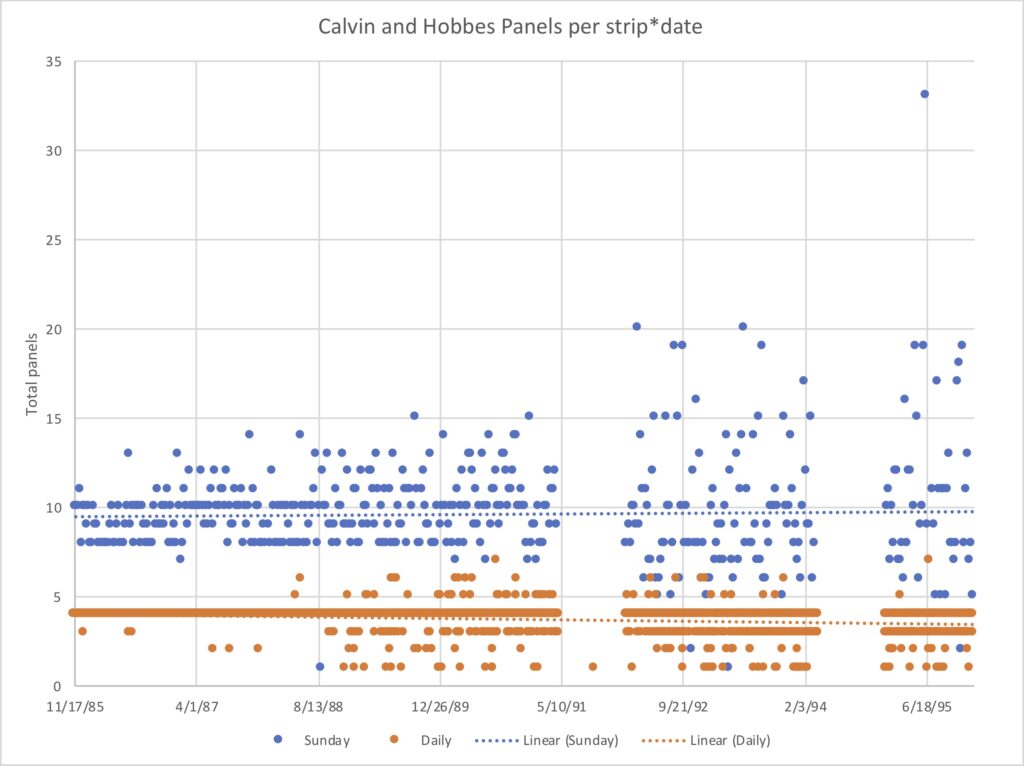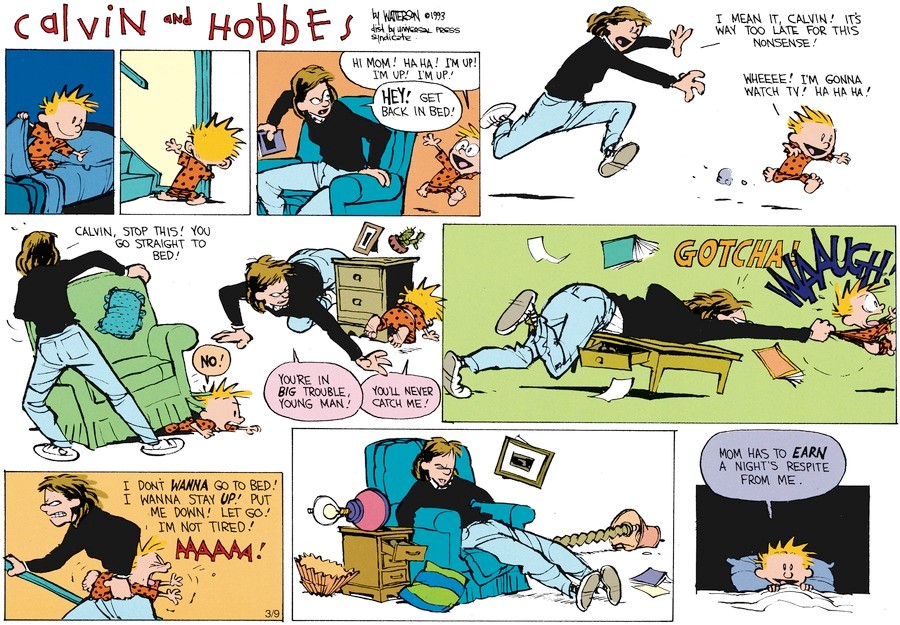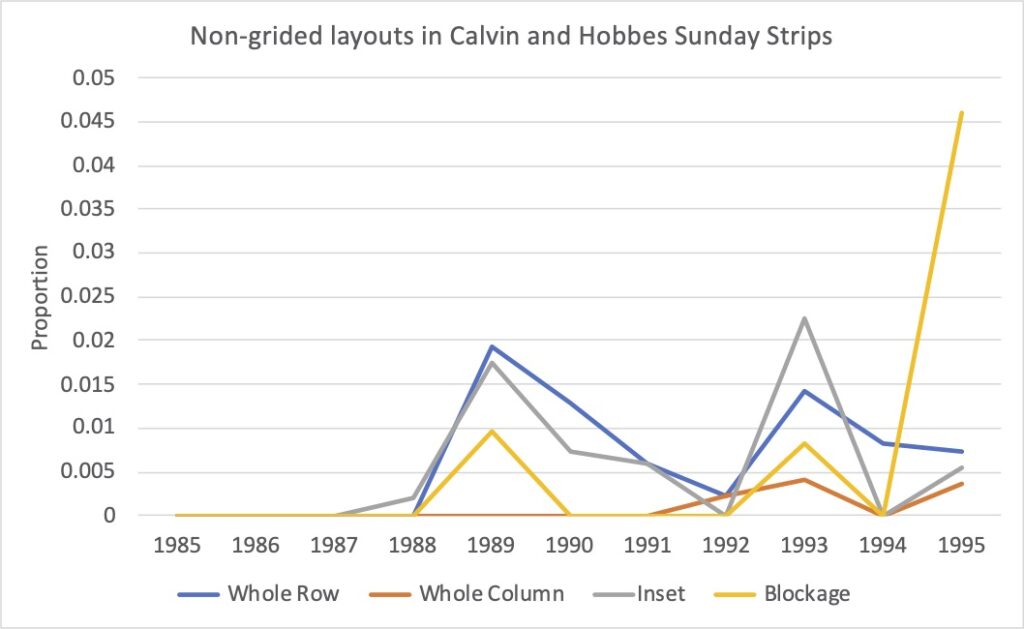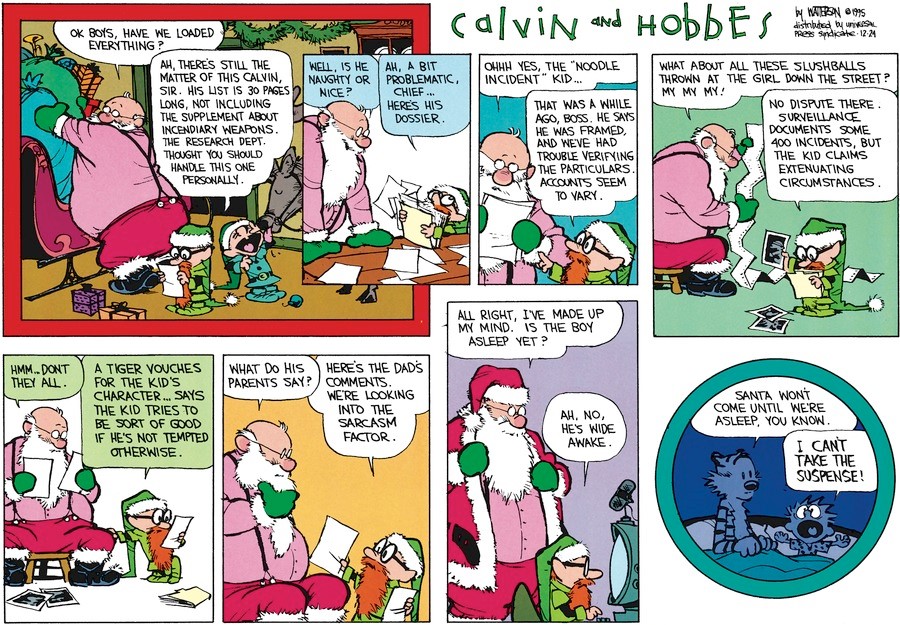Analyzing Calvin and Hobbes
On New Year’s Day 2021, I posted a thread on Twitter analyzing the properties of the Calvin and Hobbes comic strip. People seemed to like the thread, so here’s a blog post recapping it all in once place…
The Calvin and Hobbes comic strip ended 25 years ago, so let’s celebrate a New Years treat by analyzing it! Awhile back I had a students annotate structures in every C&H strip, so we have data on the whole thing. As Calvin says: let’s go exploring!
An interesting feature of this strip is that Watterson took a few sabbaticals during its run, and came back with more artistic freedom. So, I’ll focus here on how a few aspects of the strip change over time. Here’s what every panel per strip looks like (all 14,712 panels!)

Let’s start with storytelling. Overall, the strip shifts to becoming more visual and multimodality balanced in meaning over time. In this graph, higher numbers mean more meaning carried by pictures than words (0=balanced):


You can also see this in the overall increase of wordless panels across strips. Interestingly, you see the same trends for both daily and Sunday strips, suggesting broader shifts in Watterson’s storytelling inclinations:


The amount of words also changed. The strip steadily got more wordy in the first half of its run, but then started decreasing again as it shifted to visual meanings:


Let’s also talk about layout! Watterson pushed to have more freedom in his layouts after his sabbatical, where he was allowed to occupy a whole canvas space rather than be forced like other strips to have a flexible grid that could be rearranged on a comics page.
You see this directly in the numbers: Overall, his gridded Sunday layouts plummet after his sabbatical! You also see increases in all non-gridded types of layouts, like columns, insets (panels in panels), and blockage (stacked panels).


The panel shapes also change, shifting from the gridded squares to more flexible rectangles and borderless panels (other panel shapes increased too, but were too low to show up in a graph):


Finally, how often does Hobbes appear in the strip? Hobbes is in about 40% of strips, but only about 2% where he’s a stuffed animal—mostly he’s “real”!


I’ll conclude by saying that all this data will be made open likely later this year, along with annotation of +36K comic panels from 300+ comics from around the world in our Visual Language Research Corpus. I analyzed some of the VLRC dataset in my recent book, Who Understands Comics? (plug!), but there’s several more analyses to come from our lab, and then we’ll post it online. I’m up for sharing it before then if people are interested.
Comments